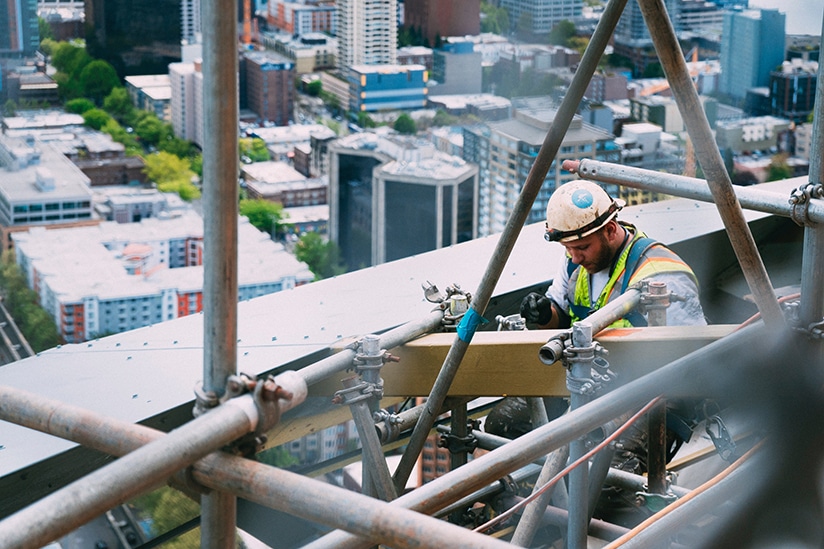Cost management and control in building construction
Oct 03, 2018

As far as KPIs go, costing is going to be one of the most vital pieces of information for any construction project. It’s a creative process that involves getting great service and material deals, forging partnerships, and putting together a plan of action regarding planning, budgeting, financing, funding and cost management.
The ultimate goal is simple – complete the project in the best way, within the approved budget.
Contained within that ultimate goal should be the desire to support decision-making, find methods of cost reduction, offer added project value, create adequate rules of knowledge and behaviour, and continuously improve both the organisation and information available.
So, what is cost management and control?
At the start of any project, a development budget study is performed by the parties involved to give an accurate projected figure for the costs and returns expected. The first part of this is to build a cost plan. Due to the uncertainty and variability in construction projects, this is invariably a complex task that requires a combination of expertise, feedback and data.
A cost plan often includes (but is not limited to):
- All construction costs
- Miscellaneous project costs
- Professional fees
- Contingency
- Project insurance
- Surveys
- Agents’ fees
- Advisers’ fees
Once these fees are estimated, they should be apportioned and allocated. At this stage of budgeting, elements of cost control can enter the picture. It’s important to note that budget refers to maximum expenditure for the project, whereas cost control refers to the management of expenditure to minimise it and keep it from affecting the budget.
Cost control is most commonly divided into two parts, the cost of design (usually architects), and the costs of contractors (the construction teams).
Considerations to be made
When dealing with cost management and control, you must keep the overall objective in mind: managing the project’s delivery within budget. One way to make sure that this happens is to constantly consider the costs before and during the project. Observing costs during a construction project is an effective cost management technique, and is referred to as cost reporting.
Cost reporting during a project will allow you to put a figure on the cost to date and the expected final cost of the project. These two figures are incredibly useful to many of the parties involved, but not only for keeping on top of the numbers. These figures also provide opportunities. Any eagle-eyed cost manager will be keen to spot opportunities for cost savings, and cost reporting will allow that, as will it allow for the assessment of any risks to the costs, so that they can be avoided.
Effectively monitoring expenditure
It’s a common mistake to think that cost management falls only on the hands of the decision makers or those who control the budget. In truth, it’s a team effort that comes from everyone on site, to be resource efficient, to be time efficient, and to respect the boundaries of the budget.
These are the factors involved in effective cost management during a project:
- Enforcing the point that all design and construction decisions are based on cost implication forecasts and that no decisions shall be made to exceed the budget.
- Ensuring that the design is managed within the bounds of the cost plan at all stages, and that any design changes must also adhere to the cost management structure.
- No member of the design team has the power to increase costs without balancing them with savings in another section.
- Monitoring expenditure throughout, especially with each alteration or variation to the brief agreed upon.
- Adjusting the cash flow based upon any alterations or variations.
- Updating the cost management and control details during the project as more information arrives is vital to the accuracy of forecasts and budgets.
- Review regularly, as many risks are often avoidable.
- A contingency fund should always be available, and should be large enough to counteract any unforeseen risks. Effective cost management shall not allow for this fund to be used to cover costs in changes, requirements or variations.
Keeping others in the loop
Knowing your facts and figures is all well and good, but divulging that information to the relevant parties is crucial. The client must be well informed of the budget and cost situation, with accurate and regular reports. Nothing should be entered incorrectly or omitted.
All parties must be clear on the contents of cost reports, and the current costs of the project should be compared to the forecasted costs and budget regularly to provide context of actual vs predicted costs, as a tool for collective decision making.
The final aim of cost control
It would be simple to see cost management and control as only providing comparisons between current and forecasted expenditure performance, but that would be missing the point that it provides stimulation for cost-reduction opportunities, bringing added value to a project, and supporting the client in their business goals. It requires a team of individuals willing to be innovative, informative, involved and committed, to navigate the myriad possibilities that exist within this dynamic and uncertain industry and on site environments.